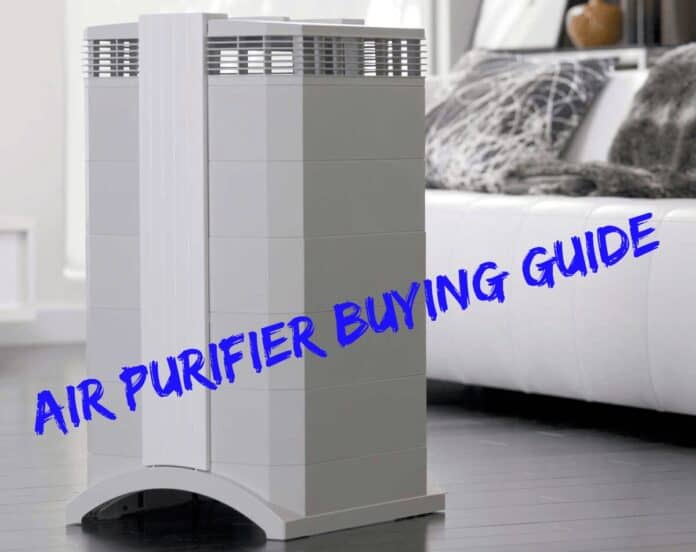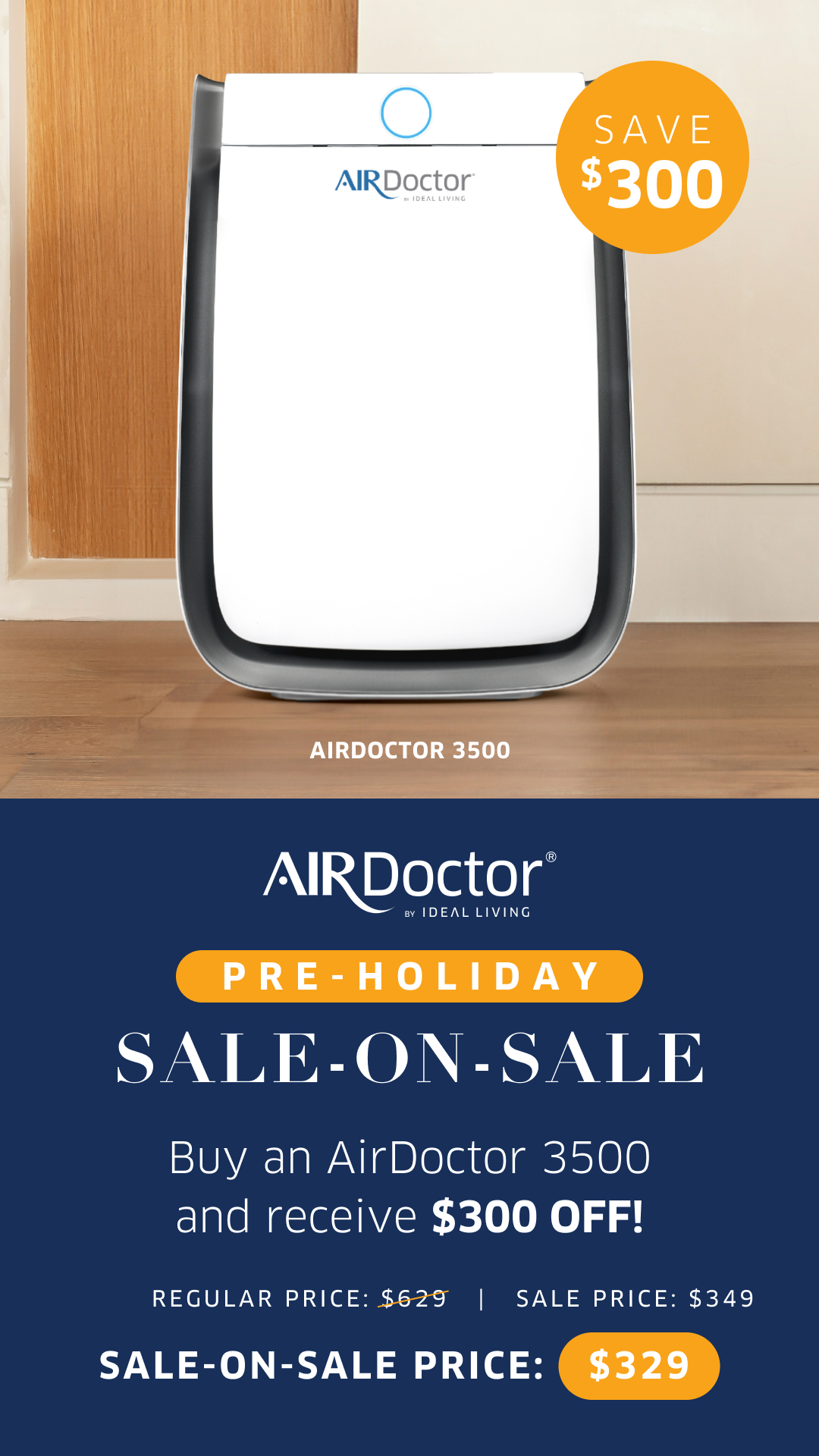We all know outdoor air can be polluted, especially in big cities. But did you know indoor air could be more polluted than outdoor air?
According to the United States Environmental Protection Agency (EPA), indoor air may be 2-5 times more polluted than outside air. Some of the factors why:
– Bad ventilation
– Indoor pollutant sources like:
- Dust mite feces
- Mold Spores
- Pollen
- Pet Dander
- Germs, odors
- VOCs (volatile organic compounds)
- Tobacco Smoke
- Building materials such as asbestos, formaldehyde, and lead;
- Household products and pesticides such as perfumes, cleaning products, air fresheners,
- Gasses such as radon and carbon monoxide;
Indoor air pollutants can cause asthma attacks, itchy eyes, sneezing, and runny nose. According to the American Lung Association, radon and tobacco smoke can cause even more dangerous health effects, including lung cancer.
The good news is that using an air purifier can make your indoor air healthier by filtering out your space’s allergens, odors, and other pollutants. Also, the EPA recommends using an air purifier.
But many air purifiers are available on the market, and understanding which model is best for you may be tough. So we are here to help you with the guide.
Table of Contents
Air Purifier Buying Guide
What Is an Air Purifier?
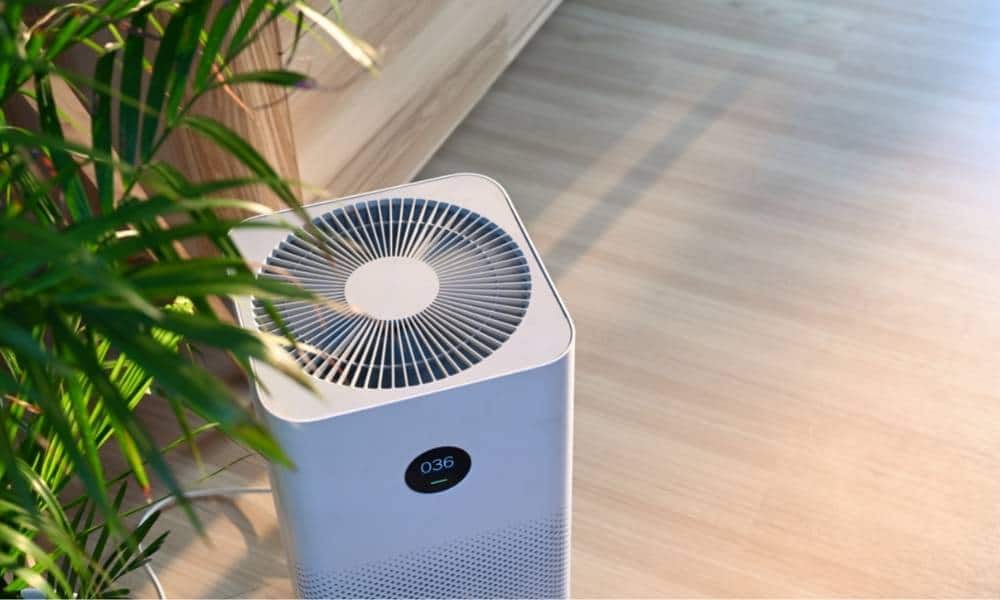
An air purifier is a device that removes contaminants from the air in a room. These devices are commonly marketed as beneficial to allergy sufferers and asthmatics and reduce or eliminate second-hand tobacco smoke.
Air purifiers may be either small stand-alone units or larger units affixed to an air handler unit (AHU) or an HVAC unit found in the medical, industrial, and commercial industries.
How Do Air Purifiers Work?
Purifying techniques
Thermodynamic sterilization (TSS) uses heat sterilization via a ceramic core with micro-capillaries heated to 200 °C (392 °F). It is claimed that 99.9% of microbiological particles – bacteria, viruses, dust mite allergens, mold, and fungus spores – are incinerated.
The air passes through the ceramic core by the natural process of air convection and is then cooled using heat transfer plates and released. TSS is not a filtering technology, as it does not trap or remove particles.
TSS is claimed not to emit harmful by-products (although the byproducts of partial thermal decomposition are not addressed) and reduce the atmosphere’s ozone concentration.
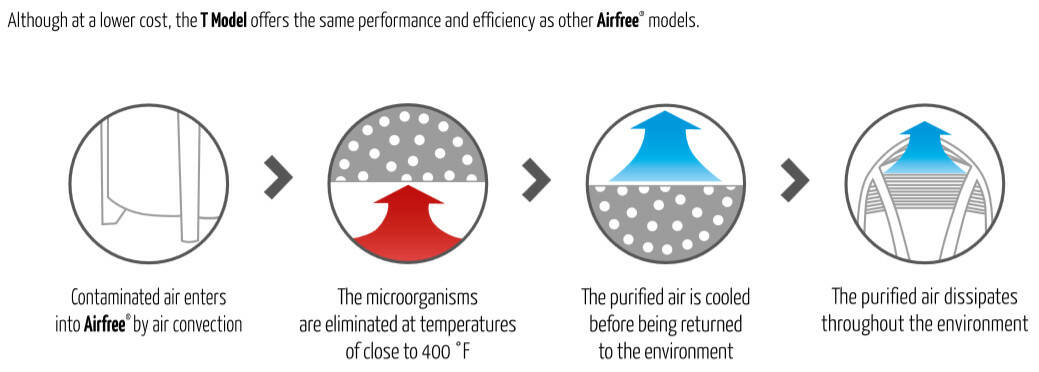
Ultraviolet germicidal irradiation – UVGI can be used to sterilize air that passes UV lamps via forced air. Air purification UVGI systems can be freestanding units with shielded UV lamps that use a fan to force air past the UV light.
Other systems are installed in forced air systems so that the circulation of the premises moves micro-organisms past the lamps. The key to this form of sterilization is the UV lamps and a good filtration system to remove the dead micro-organisms.
For example, designed forced air systems impede line-of-sight, thus creating areas of the environment shaded by UV light. However, a UV lamp placed at the coils and drained pan of the cooling system will keep micro-organisms forming in these naturally damp places.
The most effective method for treating the air rather than the coils is in-line duct systems; these systems are placed in the duct’s center and parallel to the airflow.
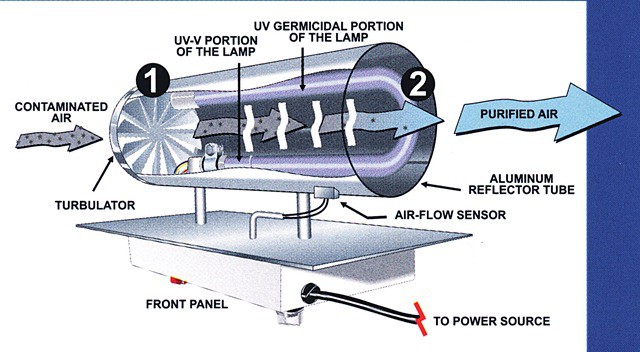
Filter-based purification traps airborne particles by size exclusion. Air is forced through a filter, and the filter physically captures particles.
HEPA filters remove 99.97% of 0.3-micrometer particles and are usually more effective for larger particles. HEPA purifiers that filter all the air going into a cleanroom must be arranged so that no air bypasses the HEPA filter.
In dusty environments, a HEPA filter may follow an easily cleaned conventional filter (prefilter), which removes coarser impurities, so the HEPA filter needs cleaning or replacing less frequently.
HEPA filters do not generate ozone or harmful byproducts during their operation. Filter HVAC at MERV 14 or above is rated to remove airborne particles of 0.3 micrometers or larger.
A high-efficiency MERV 14 filter has a capture rate of at least 75% for particles between 0.3 to 1.0 micrometers. Although a MERV filter’s capture rate is lower than that of a HEPA filter, a central air system can move significantly more air in the same period of time.
A high-grade MERV filter can be more effective than a high-powered HEPA machine at a fraction of the initial capital expenditure. Unfortunately, most furnace filters are slid in without an airtight seal, allowing air to pass through the filters. This problem is worse for the higher-efficiency MERV filters because of the increased air resistance.
Higher-efficiency MERV filters are usually denser and increase air resistance in the central system, requiring a more significant air pressure drop and consequently increasing energy costs.
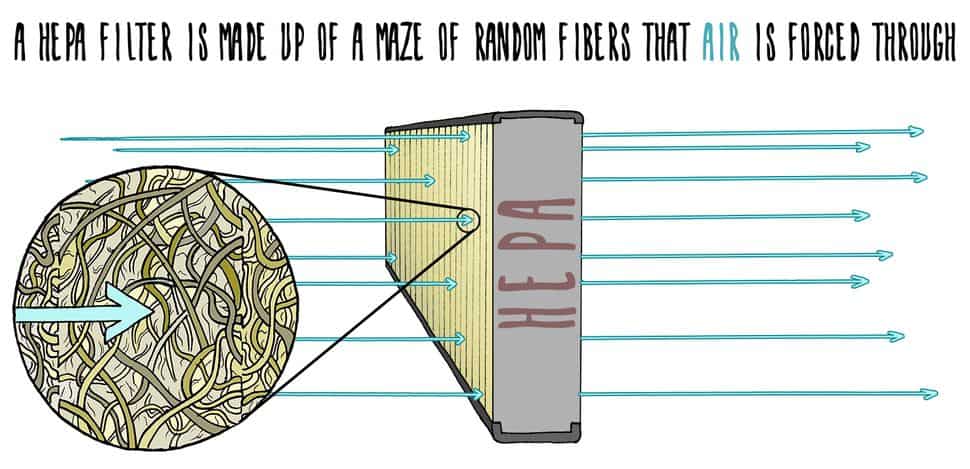
Activated carbon is a porous material that can adsorb volatile chemicals on a molecular basis but does not remove larger particles.
When using activated carbon, the adsorption process must reach equilibrium; thus, it may be challenging to obliterate contaminants.
Activated carbon is merely changing contaminants from a gaseous phase to a solid phase when aggravated, or disturbed contaminants can be regenerated in indoor air sources.
Activated carbon can be used at room temperature and has a long history of commercial use. It is usually used with other filter technology, especially with HEPA. Other materials can also absorb chemicals but at a higher cost.
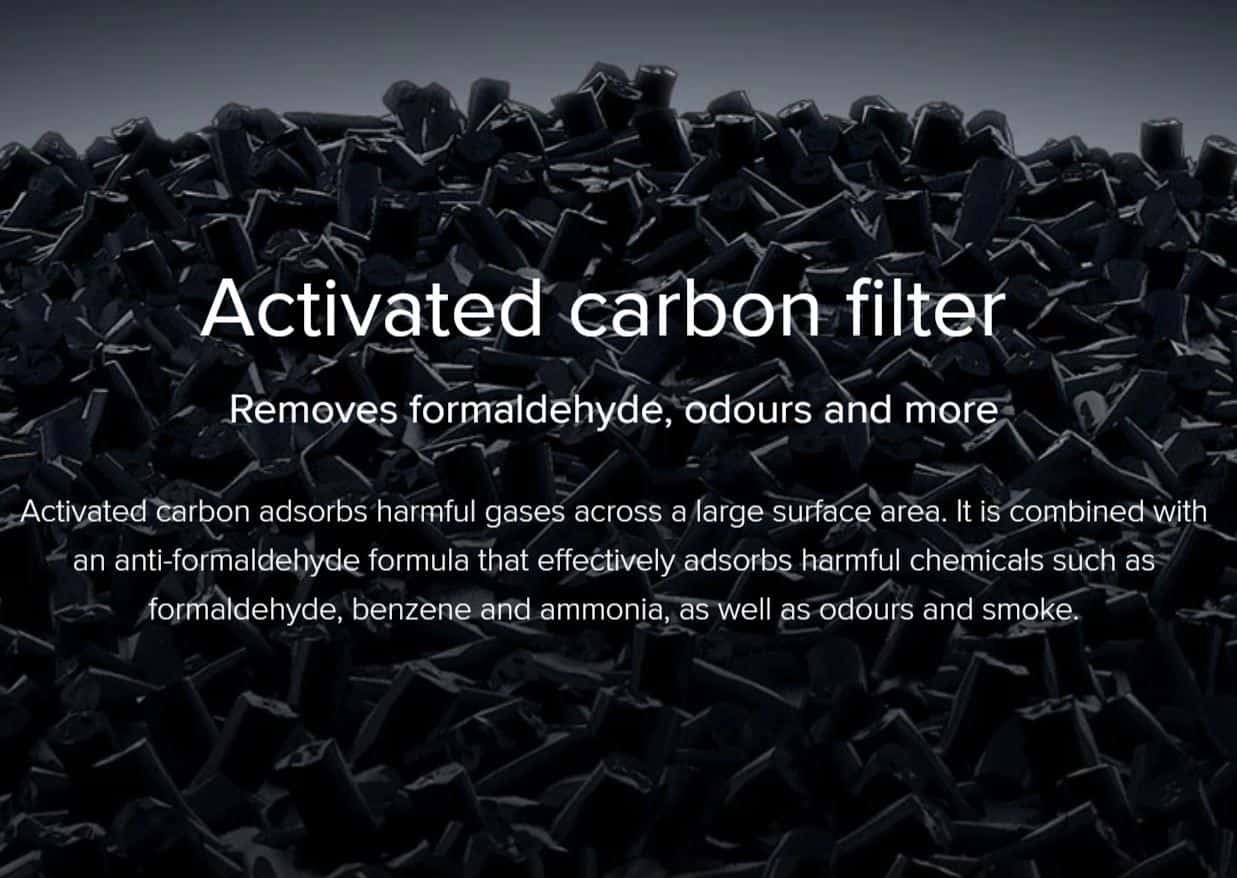
Ionizer purifiers use charged electrical surfaces or needles to generate electrically charged air or gas ions. These ions attach to airborne particles, which are then electrostatically attracted to a charged collector plate.
This mechanism produces trace amounts of ozone and other oxidants as by-products. Most ionizers produce less than 0.05 ozone, an industrial safety standard.
There are two major subdivisions: the fanless ionizer and the fan-based ionizer.
Fanless ionizers are noiseless and use little power but are less efficient at air purification.
Fan-based ionizers clean and distribute air much faster. Permanently mounted home and industrial ionizer purifiers are called electrostatic precipitators.
Why Do I Need an Air Purifier?
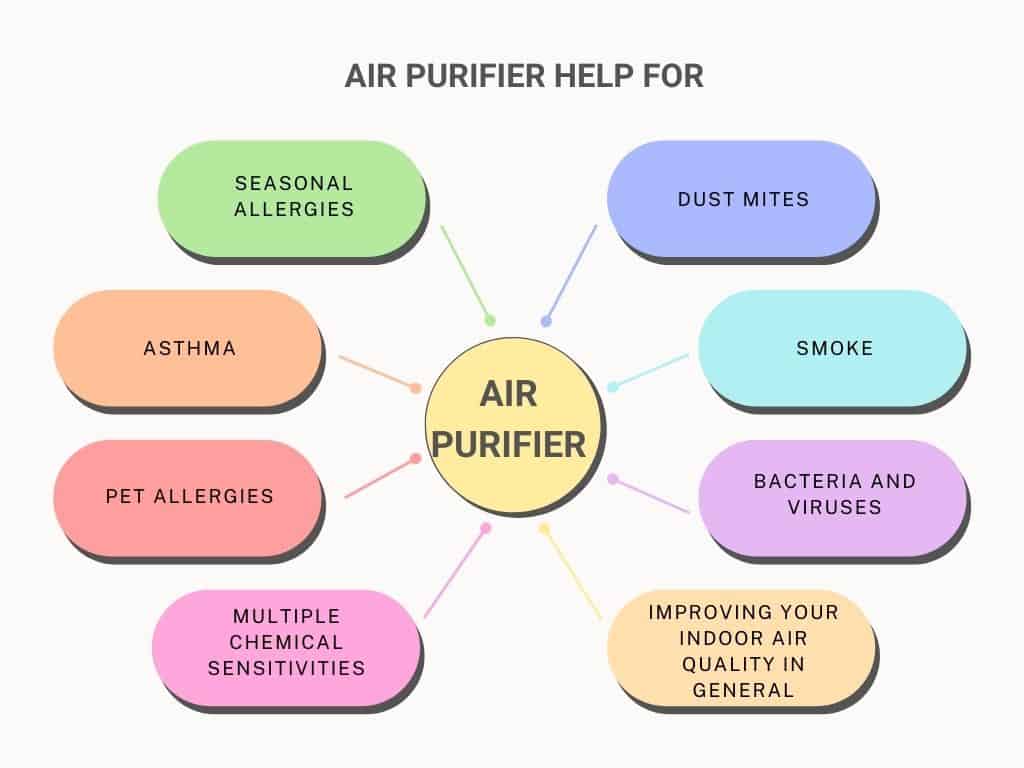
There are plenty of air purifiers on the market, and you must know why you should buy one or another.
When choosing an air purifier, first consider your indoor air quality lacks.
You should choose an air purifier for allergy or asthma relief if you have allergies or asthma.
As another alternative, smoke air purifiers are specifically created to remove smoke, fireplace soot, and other associated fumes that could aggravate existing respiratory conditions or cause unpleasant odors in your environment.
If you are extremely sensitive to chemicals, you might consider an air purifier for multiple chemical sensitivities (MCS). These models contain even more odor and chemical filtration and are often manufactured with materials that will not off-gas chemicals into the air and aggravate your symptoms.
Here are some examples of conditions and airborne pollutants you might target.
Seasonal Allergies
If spring is your enemy, then an air purifier is your savior. Allergy air purifiers are excellent solutions for helping relieve spring, fall, or year-round allergies, including allergies to pollen and dust.
Models that feature True-HEPA filter technology trap nearly 99.97% of allergens smaller than 0.03 microns (the ones that aggravate your symptoms the most).
With these irritants out of your air, your incidences of itchy eyes, sneezing, coughing, and runny nose will be reduced, and your indoor air will be healthier daily.
Asthma
An air purifier is an excellent device for asthma because it operates continuously to eliminate dust and other asthma-triggering shreds from the air.
Air purifiers with odor-absorptive filtration are the best option because they can overtake triggers like fragrances, household chemical odors, and smoke.
Various asthmatics stories have joined one in their home and have received significant rewards regarding their asthma and overall well-being.
Pet Allergies

Do you have pets, and someone is allergic to them?
Don’t worry; an air purifier for pets can help. Most people are not allergic to cat and dog fur. They’re allergic to the dander of cats and dogs. Pet dander particles are the skin cells that cats and dogs shed.
Dander is tiny and can remain in the air for a long time. These particles also manage to go where your pet runs and hold around after leaving the area.
Air purifiers purify these portions from the air, grabbing the dander in the filters. Activated carbon odor filters intercept pet odors and improve fresh-smelling, healthful air everywhere in your house.
Multiple Chemical Sensitivities
Multiple chemical sensitivity (MCS) is when a person is sensitive to a particular chemical fume or chemical fumes they might find in their environment.
These might hold odors from fragrances/colognes, air fresheners, or unique cleaning products. Triggers might be fumes off-gassed from elements used in recently built homes, new carpeting, solid flooring, or even new furniture.
Outside, you might meet MCS triggers in salons, construction areas, hospitals, or other spaces where chemicals are constantly used.
Air purifiers with an extensive odor filtration system with the key ingredient of activated carbon are best for helping treat an MCS condition.
These models have cloth or pelletized activated carbon filters that can measure in pounds. They’re also constructed with materials created to be free of off-gassing chemicals like certain glues, solvents, and plastic housing components, so the actual unit will not contribute to your symptoms.
Dust Mites
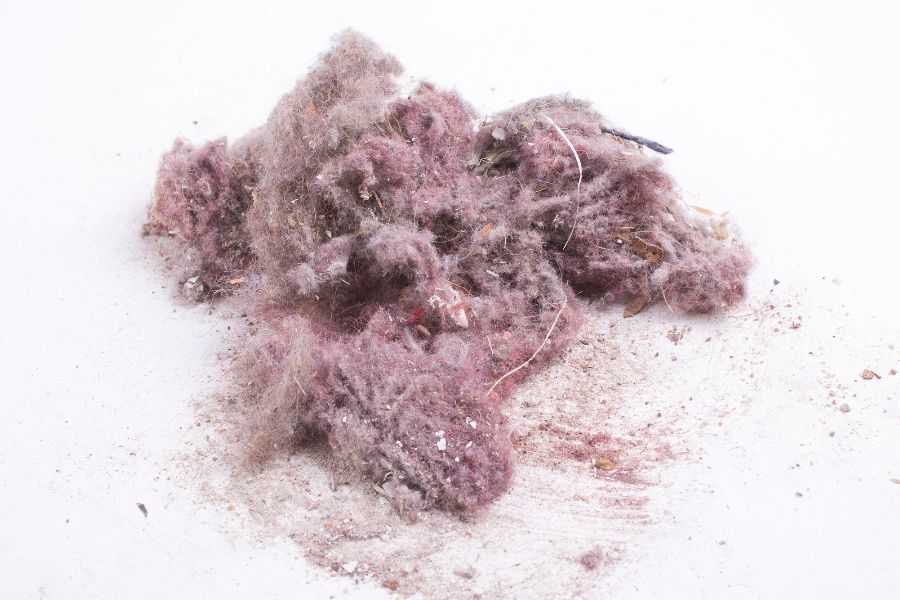
Dust mites are small organisms that live off organic material, such as dead skin flakes or dust. Our homes have many dust mites because of the perfect environment to live in and breed. Dust mites are about 0.03 to 35 microns in length.
These little organisms move easily through the air on the smallest air currents like those created when replacing your sheets, sweeping floors, opening curtains, or dusting furniture.
Unfortunately, dust mites can cause respiratory problems and aggravate allergy symptoms. Air purifiers for dust help reduce these little parasites by removing them from the air, trapping them in the filter, and leaving behind clean, healthy air.
Smoke
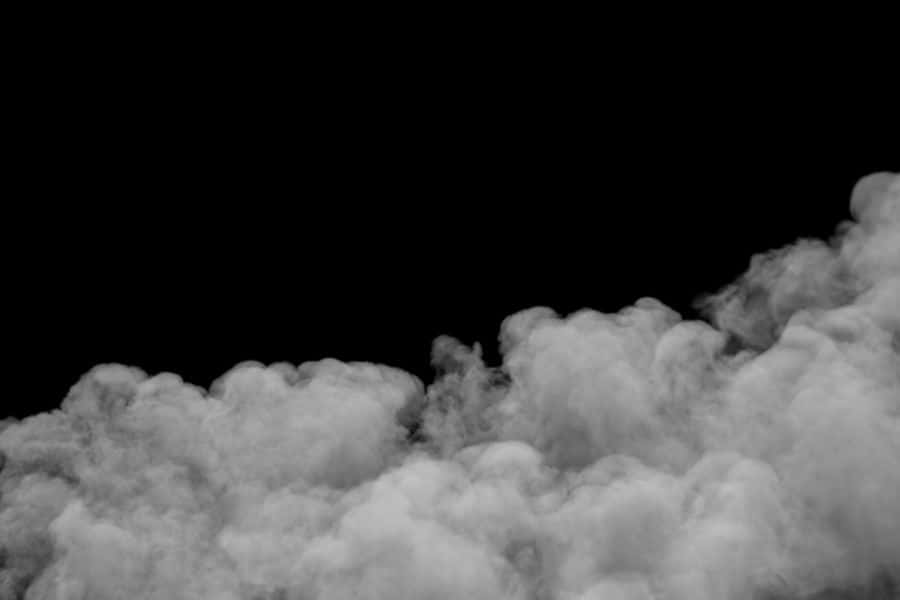
Smoking from cigarettes and your fireplace, stove, or even a wildfire near your home can cause several air quality issues in your indoor environment.
Some people may not like the scent, and others may encounter heightened allergy and asthma symptoms. Smoke air purifiers eliminate smoke particles and absorb fumes using a combination of HEPA and activated carbon filtration. You are left with cleaner, fresher-smelling air that won’t trigger your symptoms.
Airborne Bacteria and Viruses
Some air machine classes can battle illness-causing airborne viruses and bacteria and create an even healthier environment throughout the flu season or any time of year.
Ultraviolet air purifiers use UV germicidal lamps to kill airborne pathogens on touch while filtering the air. Other air purifiers might apply filters coated with a unique antibacterial coating to eliminate airborne germs as air passes through the filter.
And still, air purifiers use sterilizing temperatures to kill dangerous germs and bacteria. The study differs in the effectiveness of these models, so be sure to do your homework.
Improving Your Indoor Air Quality in General
Air purifiers aren’t just perfect solutions if you have allergies or sensitivity to a particular pollutant. However, they’re easily one of the best ways to increase indoor air quality and build a healthier living space for you and your family.
We suggest using an air purifier in your bedroom or the room you spend the most time in. Daily air filtration helps eliminate potentially harmful contaminants from your air, whether the pollutants are introduced during cleaning, brought in from the outdoors, or stirred up with day-to-day life.
There are many styles and types of air purifiers to choose from. With some research, you will find a perfect model for you – effective, good price, looks great, etc.
Plus, these appliances are naturally efficient and consume minimal energy. Most of today’s air cleaners also qualify under the Energy Star program.
What next?
So far, you know that you need an air purifier, and you see why you need it. What else should you know before buying the best air purifier that fits you?
- What size air purifier Do I need?
- What kind of features Do I need?
- Noise level
- Best Location for an Air Purifier
- CADR (clean air delivery rate)
- Air Change Rate
- How Much are Maintenance and Upkeep Needed
What Size Air Purifier Do I Need?

All air purifiers have coverage areas (Square feet/meters). Most manufacturers show this number based on max air changes per hour.
For example, if the air purifier has four air changes per hour (4ACH) and the manufacturer says that the coverage area is 600 sq. ft., then it means that this air purifier can clean 600 sq. ft. large space 4 times every hour. But that’s by using the highest fan speed.
The coverage area decreases using the 1st, 2nd, or 3rd fan speed. Remember that a higher fan speed means the air purifier will work louder. Some manufacturers show coverage based on an exact number of fan speeds, but then they say that, for example, room coverage up to 815 sq. ft. (based on two air changes per hour).
You must calculate your room area to know how large a coverage area you need.
The simplest way is to calculate the square footage of the room or space you plan to use the air purifier and compare it with a unit’s recommended coverage area. This process is easy. Just multiply the length of your space in feet by the width of the space. The result is the coverage area.
If you have allergies or asthma, we recommend you go beyond solely considering the square foot coverage area and consider the number of air changes per hour or ACH a unit will produce.
ACH shows how often an air purifier processes the entire air volume in a targeted space every hour. In other words, how often will your air purifier clean all the air in your bedroom in 1 hour?
The more air changes per hour the air purifier delivers, the cleaner your air. Allergy and asthma sufferers and those wanting to create the cleanest indoor air possible – should look for air purifiers that can perform at least four air changes per hour.
Remember that the air purifier operates only in the room where it’s placed.
For example, if you have it in the bedroom, it won’t eliminate odors in your living room, even if the doors open. You can place an air purifier in every room to keep it clean.
What Kind of Features Do You Need?
There are many air purifier types on the market, from very simple to very advanced, with many features. Many companies try to make the air purifier easier to use and save energy.
You will never use some of the features, but some of them you will love. When you shop, consider your need for these features. You don’t want to overpay for features you will never use.
We made a list of commonly added features air purifiers often have.
- Electronic/Digital Controls. Digital controls are straightforward. Electronic controls usually come together with a display. Electronic controls are more advanced and provide more features.
- Air Quality Monitor – Some air purifiers can sense the pollution level in your environment and automatically adjust purification settings to the level needed to remove the pollutants.
- Remote Control – a great tool to operate an air purifier from a distance.
- Multiple Fan Speeds – Choose various purification speeds to suit your indoor pollution level or sound preference.
- Filter Replacement Indicator – Typically, these indicators warn you when it’s time to replace your filters in the form of lights.
- Programmable Timer – Program control turns on and off at certain times during the day to help save energy.
- Carrying Handle – Handles help you simply maneuver the air purifier if you plan to move it from place to place.
- Casters – Along with handles, casters can help make it significantly easier to move your air purifier.
There are also other features such as ionizer, dimming lights, wifi, and so on. It all depends on your needs, whether you need them or not.
Air Purifiers Noise level
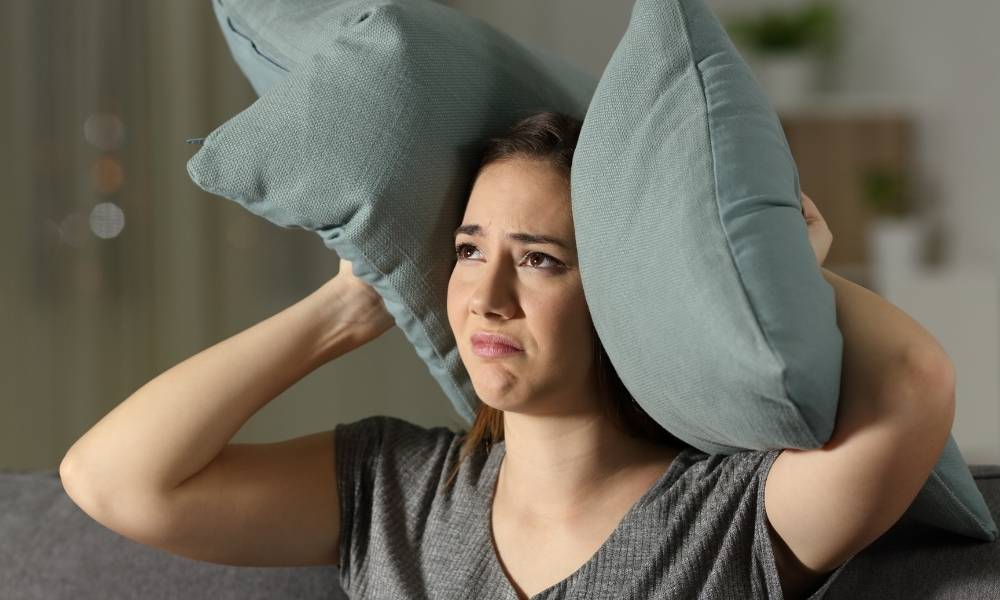
| All best air purifiers work with internal fans and will emit some level of noise. We suggest choosing an air purifier with at least three fan speeds so you can regulate the noise level. The first ones are usually weak and quiet; the highest is loud but powerful.
It’s important to consider where you plan to use the air purifier. Ask yourself these questions to help guide your choice of model and adjust your expectations. Will the air purifier be in my bedroom?This is the most popular area to use an air purifier and the most suggested. It’s also the number one area where people find high sound levels most disturbing. If you are a person who cannot stand any noise while falling asleep, using an air purifier with a programmable timer that can be set to turn the unit on after you are deeply asleep is an ideal solution. On the flip side, numerous people enjoy the “white noise” created by an air purifier because it can help produce a calming effect in the room. Either way, it’s necessary to understand that most air purifiers will make noise. Finding the sound level you’re comfortable with is just a matter of finding it. Air purifier’s decibel rating, how it compares with familiar tones.Most air purifier manufacturers write decibel (dB) amounts in specifications. You can compare that with other devices you use in the home, for example, a refrigerator. That can help you to choose your air purifier. We have also made a chart for you to know the noise level an air purifier will produce based on its decibel amount. Decibel (dB) Equivalents |
|
|
0dB |
– |
|
10dB |
Breathing, Barely audible |
|
20dB |
Whisper, rustling leaves |
|
30dB |
Quiet rural area. |
|
40dB |
Library, bird calls (44 dB); lowest limit of urban ambient sound |
|
50dB |
Rainfall, Quiet suburb, conversation at home. Large electrical transformers at 100 feet. |
|
60dB |
Conversation in restaurant, office, background music, Air conditioning unit at 100 feet. |
|
70dB |
Passenger car at 65 mph at 25 ft (77 dB); freeway at 50 ft from pavement edge 10 a.m. (76 dB). Living room music (76 dB); radio or TV audio. |
Keep in mind; that noise levels are different for each person.
Even decibel results can sometimes be cheating since many things can affect the sound level, including the position of the air purifier, whether carpeting is present, the amount of furniture in the room, and the distance a person is from the air cleaner while it is running, and the chosen fan speed, to name a few.
There are, however, things you can do to reduce the effect of the noise an air purifier makes.
Best Location for an Air Purifier
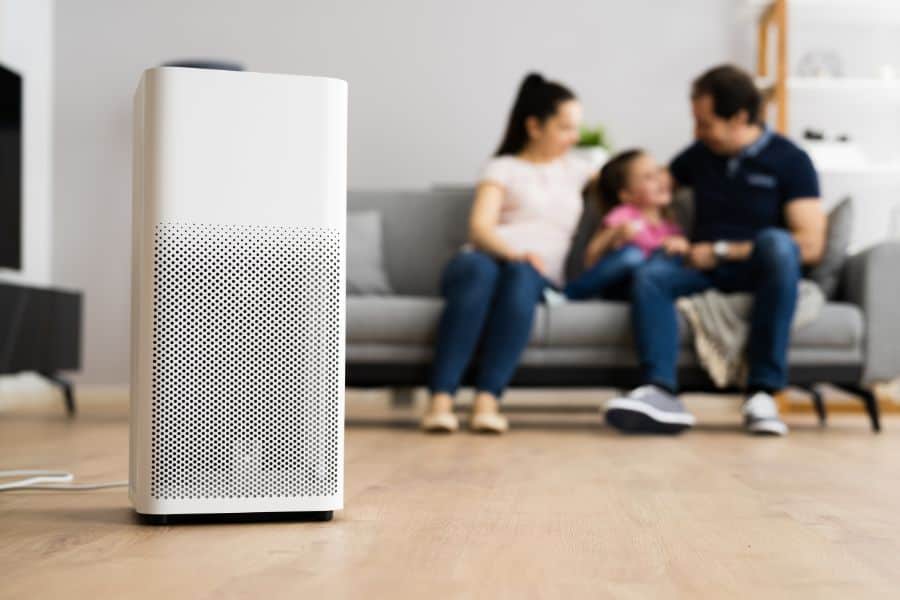
The location is critical. If an air purifier is small and portable, there are no problems, but it may be stressful and challenging to find the best place if it is heavy and big. But no worries, we will help you out.
Place the Air Purifier Closest to the Source.
If you have a smoker in your home or a smelling area, then that is a place where you should place the air purifier.
The closer the air purifier is to the contaminant, the quicker it will trap the particles that give you trouble. If you appear to have a neighbor who smokes, leading to some odors seeping into your home, place the air purifier near the vent or wall where the odor is most concentrated.
Although it is tough to trap odors not arising in your home, by placing the air purifier where the odor is being introduced into your home, you are trapping the particles as close to the offender as possible.
Do not put an air purifier in the Corner.
You must choose a location not behind furniture or straight below shelves. Since most air purifiers have an intake near the front of the machine, you want it to be able to see the whole room and have access to the many airborne particles that have run rampant.
This also goes for the top of the air purifier. By placing it under a shelf, the only thing that will get that fresh air is the underside of your bookshelf. The rule of thumb is to keep a few clearance feet at the top, front, and sides for optimal efficiency.
Electronics.
Some electronics that run on similar wavelengths can make resistance, so avoid placing air purifiers near televisions, microwaves, and stereo equipment. Air purifiers are computer-friendly, though, so smaller appliances will not harm.
The air purifier wants to be alone.
Air purifiers are most productive when all the doors and windows are shut. This allows the air purifier to clean the room’s air without interference from hallways or other rooms.
Since air will flow wherever an opening is, the air purifier will pull in air from outside if the doors are not fully closed.
This may seem counterintuitive because it usually opens doors and windows to let fresh air in. However, since small particles, such as dust and pollen, are challenging to see, let’s imagine it’s snowing outdoors.
Your air purifier is hard at work, clearing your room of snow, but with the windows open, more snow continues to enter the room, thus creating a snow carpet that will not disappear.
When temperatures can rise to triple figures during the summer, placing the air purifier near an open window may trap some particles as they enter the room.
But please, find a safe location so that your air purifier friend does not get hurt – your air purifier does not like to be in scorching areas any more than you do.
It is Portable!
The good thing about having a portable air purifier is that you can move it from place to place throughout the day.
During the daytime, putting it in the living room allows you to watch television or spend time reading on the couch while breathing in fresh, clean air.
When it is time to rest, moving your air purifier to your bedroom an hour before bedtime performs the same clean air so you can drift to dreamland in no time.
Wherever you place your air purifier, run it daily so that your air purifier buddy keeps your home clean and happy.
CADR (clean air delivery rate)
The air must pass through the air cleaner’s filter to clean an entire room. Air cleaners are rated by the amount of air passing through the filter. This rate is called CADR or Clean Air Delivery Rate.
CADR measures the amount of particle-free air being delivered into the room. It is given in three measurements – one for pollen, tobacco smoke, and one for dust. The higher the CADR rating, the larger the room size that an air cleaner can clean.
The CADR ratings were developed by the Association of Home Appliance Manufacturers (AHAM) and are measured according to an ANSI/AHAM AC-1. The ratings are recognized by retailers, manufacturers, standards organizations, and government bodies such as the EPA and the Federal Trade Commission.
The CADR specification does not cover Whole-house air cleaners because the measurement is performed in a standard 1,008-cubic-foot (28.5 m3) room. The size of a typical house room has different airflow patterns than whole-house filters.
Measurements are made with the filter running and not running, so particles that naturally fall out of the air are not counted as part of the filter’s operation. The measurement only applies to particulate matter, not to gasses.
Air Change Rate
The ACH (or the air change per hour rate) shows how often the unit cleans the entire room’s air for one hour. So, if you find an air purifier that has 5 ACH, this means the air will be cleaned every twelve minutes.
You should understand that the advertised ACH rate usually means the maximum operating speed and room size. So if you like your air purifier to be quiet and do not want to run it at top speeds all the time, it is wise to oversize by, say, 20-40%.
How Much Maintenance and Upkeep is Needed
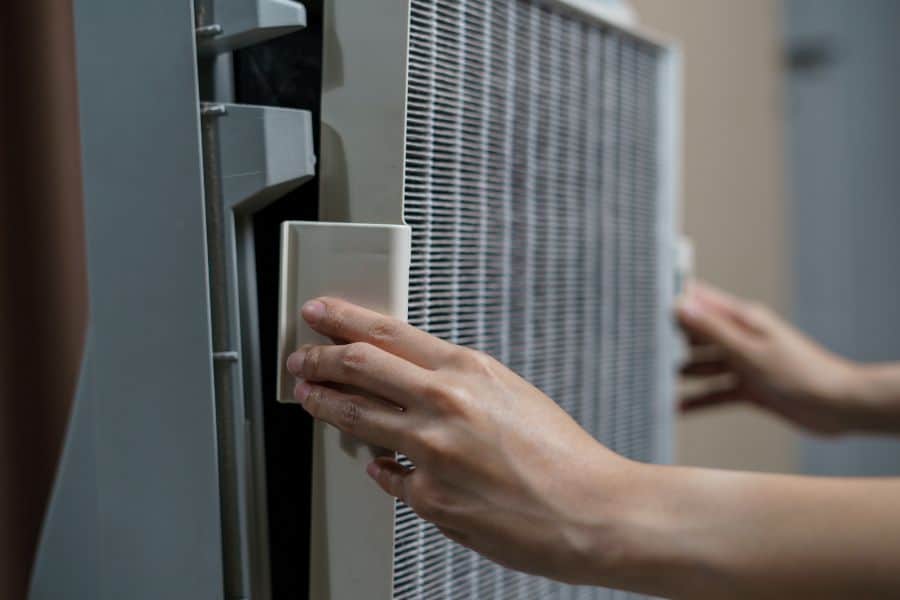
Regular maintenance is a significant part of having your air purifier working effectively for the long term.
Not surprisingly, there is a certain amount of cost and work required. Indeed, air purifiers will work for a time as a “set it and forget it” appliance.
However, to get the most out of your investment, you’ll need to replace the filters at the manufacturer’s recommended time intervals or as needed (if you’re using a filter air purifier) or more often, depending on the pollution level in your indoor environment.
And if you choose to purchase an air sterilizer, you must be committed to performing recommended maintenance periodically to keep it running and new.
If you have an air purifier with a filter, you should replace the filters at the manufacturer’s recommended filter change intervals to keep the unit’s high pollutant removal level. Depending on how many air purifier filters your unit manages, you might need to change them at various times.
For example, your air purifier’s HEPA filter might last 12 months, the activated carbon filter lasts six months, and the pre-filter (if equipped) lasts three months.
When shopping for an air purifier, be sure to take the cost and frequency of future filter replacements into consideration. The typical filter life of all included filters is usually listed in the product specifications.
Pre-Filters, HEPA Filters, and Carbon Filters
Air purifiers that use filters to purify the air are the most popular units on the market. Pre-filters can either be washed or inexpensively replaced, depending on the model purchased.
HEPA filters are designed to remove the tiniest pollutants from the air and permanently catch them. The HEPA filters are the most expensive filters to replace. So, keep the pre-filter clean to extend HEPA filter life.
Carbon filters, made of activated carbon, work by trapping or absorbing the air’s chemicals and odors. The bigger and thicker the filter is (or the larger the amount of carbon present), the better the air will be cleaned of chemical or odorous pollutants.
Regardless of your carbon filter size, it is essential to maintain it. If your air purifier uses a thin carbon filter, it will need to be changed more often, depending on how much you run the unit and your indoor environment’s conditions.
For example, tobacco smoke will saturate a carbon filter quickly. With a small amount of maintenance, carbon filters will help you get the most out of your air purifier, eliminating chemicals and odors from your indoor environment.
Remember, maintaining your air purifier will keep your unit working at top efficiency and your overall costs down. With a regular schedule and proper upkeep, you will enjoy a lifetime of clean, healthy air from your air cleaner.

